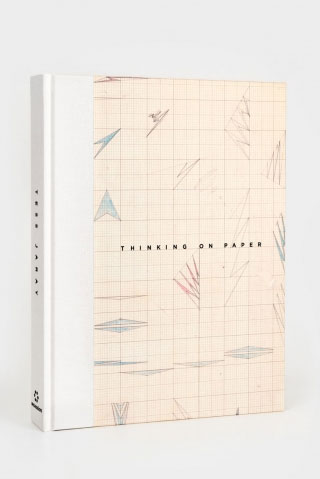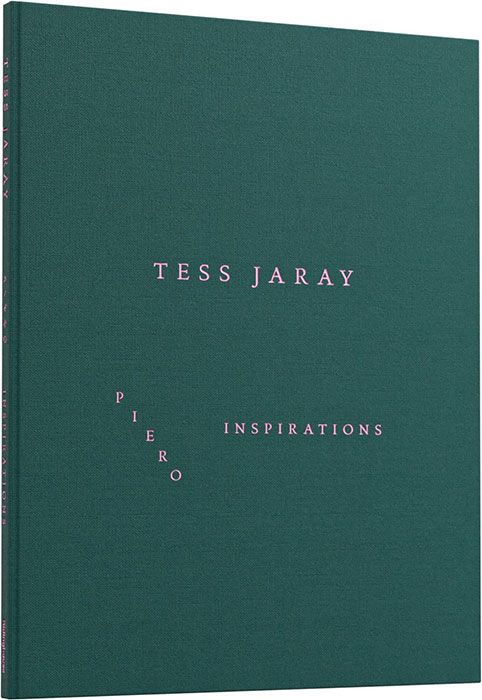
Thinking on Paper: Drawings on paper from 1960-2000, Tess Jaray (Secession)
Piero Inspirations, Tess Jaray (Ridinghouse)
As I get older I become more and more interested in artists’ sketchbooks, working drawings and ideas, as well as writers’ journals, drafts and correspondence. The internet often means I end up reading about or around work rather than paying attention to the work itself; and I have to say that Thinking on Paper, which I was very much looking forward to, feels very much like a diversion.
It’s a beautifully produced hardback book, printed throughout in full colour despite the fact that the majority of the work is pencil or ink on graph paper. It starts with a one page statement by Jaray, discussing a moment back in 1960, when she was struggling to evoke her recent trip to Italy to research Italian painting, and found a way to articulate space on the page.
She also mentions her engagement with colour, and if there’s one thing that’s missing from this book it is the gloriously rich colours of her paintings. It’s a serious omission because without it what we end up with are monochrome mathematical doodles: grids, mappings, distortions and reflections, mostly made with a ruler on gridded paper. By the end of the book I was desperate to see some freehand drawing, to urge the artist to put away the tools she was using and use a big brush, make gestures, scribble and doodle, just make something more than this playful geometry. For me these drawings are not thinking on paper but the process which follows the thinking.

If Thinking on Paper feels like scaffolding, a mechanical support process, Piero Inspirations is a much more revealing and enjoyable book because it evidences both the inspirational source material and the final, subtly coloured paintings. Whilst I would rather travel to San Marco in Florence, Cortona or San Giovanni Valdarno to see Fra Angelico’s annunciations than linger in the Arezzo church where Piero della Francesco’s fresco cycle is on view, I acknowledge that it is an important and visually stunning work by an important artist; as are other paintings such as his Resurrection in Sansepolcro.
I’m fascinated by how this artist’s narrative and figurative work is commuted by Jaray to rich and colourful minimalist patterns and distorted grids that sing on the page in reproduction. Jaray picks up on details in the della Francesco paintings (which are reproduced in the book), such as a draped curtain, architectural detail or patterned tiled floors and uses these as source material and ideas for her responses. I’m not as enamoured with the busier works that draw on the elongated lengths of spears and flagpoles, but the simpler works are outstanding: quiet, contemplative abstraction.
The crisply and cleanly designed Piero Inspirations includes a brief statement by Jaray about her long relationship with Piero della Francesco’s work, along with short quotations about his work by art historian Roberto Longhi. If these are a little hyperbolic in their claims, they do suggest just how innovative and experimental della Franceso’s work was at the time and offer a historical and cultural context to situate them in. Longhi poetically suggests that della Francesco’s work contains ‘the snaky meanderings of functional line within the inexorable pipelines of perspective so that, properly irrigated, the vast fields of colour might all burst into flower together’ and suggests that the artist created ‘something like pure painting…’. Jaray’s work may not burst into flower, but it is pure and focussed and wonderful to behold in this delightful new book.
Rupert Loydell
